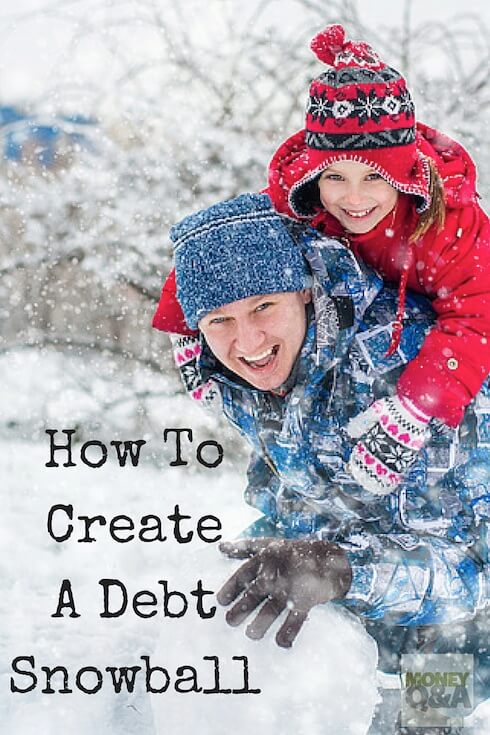The second baby step in Dave Ramsey’s The Total Money Makeover Full Disclosure: We earn a commission if you click this link and make a purchase, at no additional cost to you. is to pay off all of your debts except your mortgage. He recommends doing this by using a debt snowball.
When Dave Ramsey talks about paying off all of your debts except your home, he means exactly that, all of your debts. This is where you list all of your debts in order from the smallest balance to the largest balance.
You should include all of your credit card debt, student loans, car loans, loans to parents, debt to the IRS, money borrowed from your parents or family, late payments that you still owe hospitals, and all of your other debts.
If you haven’t read The Total Money Makeover Full Disclosure: We earn a commission if you click this link and make a purchase, at no additional cost to you. , I highly recommend it! It is one of the top ten personal finance books to read.
The Total Money Makeover: Classic Edition: A Proven Plan for Financial Fitness
Price: $17.93

Here Are Dave Ramsey’s Baby Steps
Baby Step 1 – $1,000 Emergency Fund
Baby Step 2 – Pay Off All Of Your Debt With A Debt Snowball
Baby Step 3 – Fully Fund Your Emergency Fund
Baby Step 4 – Save 15% Of Your Income For Retirement
Baby Step 5 – Save For Your Children’s College Education
Baby Step 6 – Pay Off Your Mortgage Early
Baby Step 7 – Build Wealth And Give
What Is A Debt Snowball?
A debt snowball is a well-known method that is used to eliminate all of your debt. This method was made popular by Dave Ramsey in his personal finance book, The Total Money Makeover Full Disclosure: We earn a commission if you click this link and make a purchase, at no additional cost to you. .
The method requires you to deal with the smallest amount of debt first and then move on to the next smallest and so on and so forth until all of your debts are completely paid off. Dave Ramsey instructs his followers to get rid of all of your debt except your mortgage which you will tackle in Baby Step Six.
How Does A Debt Snowball Work?
 Grab a piece of paper and list all of your debts owed. Make sure you list them by the balance that you owe from smallest to largest. Now, you throw all of your disposable income into paying off the debt at the top of your list, the smallest debt, first.
Grab a piece of paper and list all of your debts owed. Make sure you list them by the balance that you owe from smallest to largest. Now, you throw all of your disposable income into paying off the debt at the top of your list, the smallest debt, first.
Determine how much money you can put towards this smallest debt and keep putting money towards this debt until you have paid it off, no matter how long this takes. For all of your other debts, you continue to pay the minimum payments that are due on them. Do not become late on any of your debts if you can help it.
Once you have paid off your first debt, then you add the amount of money that you were paying on that debt and tackle the next one on your list. When you take that amount and the minimum you were already paying on that debt, you will see more money become available to put towards paying off your debt.
That is why it is called a debt snowball. It keeps rolling downhill and keeps getting bigger as you pay off more debt. You add your extra payments to the next debt where you are already paying the minimum balance. It has a compounding effect that is very powerful. Now, you just repeat this process until you have paid off all of your debts on the list.
Why Pay Off The Smallest Debt First?
Many financial planners will tell you to tackle the debt with the highest interest rate first. This will give you more bang for your buck so to speak. Dave Ramsey prefers tackling small debts first in The Total Money Makeover Full Disclosure: We earn a commission if you click this link and make a purchase, at no additional cost to you. . This can give you some very quick wins and help you gain momentum. As the snowball effect as it gains more momentum, the process picks up more steam.
His argument is that paying off debt is just as much a mental exercise as it is a physical debt repayment. You need those easy wins of small loan balances to pump you up and get you excited about rolling those debt payments into new, bigger loans that you need to pay off next. It is quite a satisfying feeling of getting rid of small loans that are like ankle biters that you never have to deal with again.
Is one plan better than another? Maybe there is one that is better. But, what you should realize is that the best repayment plan is the one that you stick to and finish. It may not be the plan that saves you the most money in interest payments.
Attacking your highest interest debt will be all for naught if you fall right back into debt immediately afterward or, even worse, if you never complete your debt snowball and stay in debt because you are continually frustrated with your lack of success paying off your debt. The best debt repayment plan is the one that works for you and your family.
The further down the list you move conquering your debts allows you to have extra money that will be paid towards the bigger debts as well. It is based on humans psychology in the sense that as you start to pay off debts you will feel encouraged and your enthusiasm will increase to pay off even more debts.
It is important to remember that paying off your house is not considered in the debt snowball. So, do not add paying off your house to this list yet. In Dave Ramsey’s personal finance book, The Total Money Makeover, he leaves paying off your house to the end of his baby steps.
Reduce your total credit card payments by up to 30% to 50% with Debt.com.
Paying Off the Highest Interest Rates First
A lot of other financial experts recommend people paying off the debt with the highest interest rate first. This makes sense when you think about it.
If you had two debts of $10,000 each, one credit card with a 10% annual interest rate (Card A) and a second card that charges you 15% interest (Card B), it will make a lot of financial sense to tackle the debt with the highest interest rate first. In our example, Card A will charge you $1,000 in annual interest over the course of the next year while Card B will cost you $1,500 in interest.
So, if you can pay off Card B first, then you have the potential of saving $500 that you would have spent in interest payments. Foregone interest payments can be then rolled into quickly paying down the rest of your debt.
The Total Money Makeover Full Disclosure: We earn a commission if you click this link and make a purchase, at no additional cost to you. and Dave Ramsey’s baby steps have helped millions of people get out of debt. The debt snowball is one of the key pieces of the puzzle.
Baby Step 1 – $1,000 Emergency Fund
Baby Step 2 – Pay Off All Of Your Debt With A Debt Snowball
Baby Step 3 – Fully Fund Your Emergency Fund
Baby Step 4 – Save 15% Of Your Income For Retirement
Baby Step 5 – Save For Your Children’s College Education
Baby Step 6 – Pay Off Your Mortgage Early
Baby Step 7 – Build Wealth And Give
The Total Money Makeover: Classic Edition: A Proven Plan for Financial Fitness
Price: $17.93



God Bless you for serving in our military